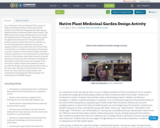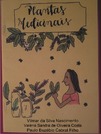
Medicinal & Edible Plants of Montana Used by Indigenous Peoples and Early Settlers
This new Special Topics course is open to all university students in the spring 2017 semester. As a Special Topics course the numbering reflects upper division credit, but no pre-requisites are required, allowing students in a variety of disciplines to enroll. The course begins by providing a content vocabulary that consists of plant, habitat, ecoregion, and cultural terminology. Teaching with the assumption that non-biology students enroll, terms are presented and learned in a hands-on context that requires no previous understanding of biology. For example, basic plant structure is presented through simple flower dissection and “Structure Jeopardy”, a fun and interactive approach that allows students to earn points while testing literacy. Students work together in small groups (3) to collect voucher specimens of medicinal and edible plants in which the group is most interested. For native students, it is anticipated that selections may be based on traditional uses. During this process, students develop specimen collection and processing skills that allow them to acquire marketable techniques used in herbaria throughout the world. These same groups collect specific medicinal and edible plant material (e.g., roots) for their plants, drying and preparing the material in the manner most often used. For example, roots used as flour substitutes are presented whole as well as in a ground state. Groups, working closely with the professor, learn methods on how to research collection records, find habitat information, and develop geolocation skills, all of which ensure success in locating material. Students in each group also learn to perform peer-reviewed scientific literature searches that provide the most current research and knowledge on culturally important medicinal and edible plants. As individuals, students are required to gather information through discussion with family or community members on plant uses, thereby forming relationships between the broader community and course knowledge. Students are also encouraged, through literature or community involvement, to explore native or colloquial names for specific plants and to determine if these terms relate to cultural uses. Working with the professor, students learn presentation skills as each group or individual present the information they have learned using Power Point. Interactive laboratories exercises provide information and practices on good methodology and mock sessions with the instructor afford powerful feedback prior to classroom presentation. As available, local and indigenous guest lecturers provide interactive and personal experiences that aid to ensure student retention of course material.
- Subject:
- Life Science
- Material Type:
- Syllabus
- Date Added:
- 06/30/2016

